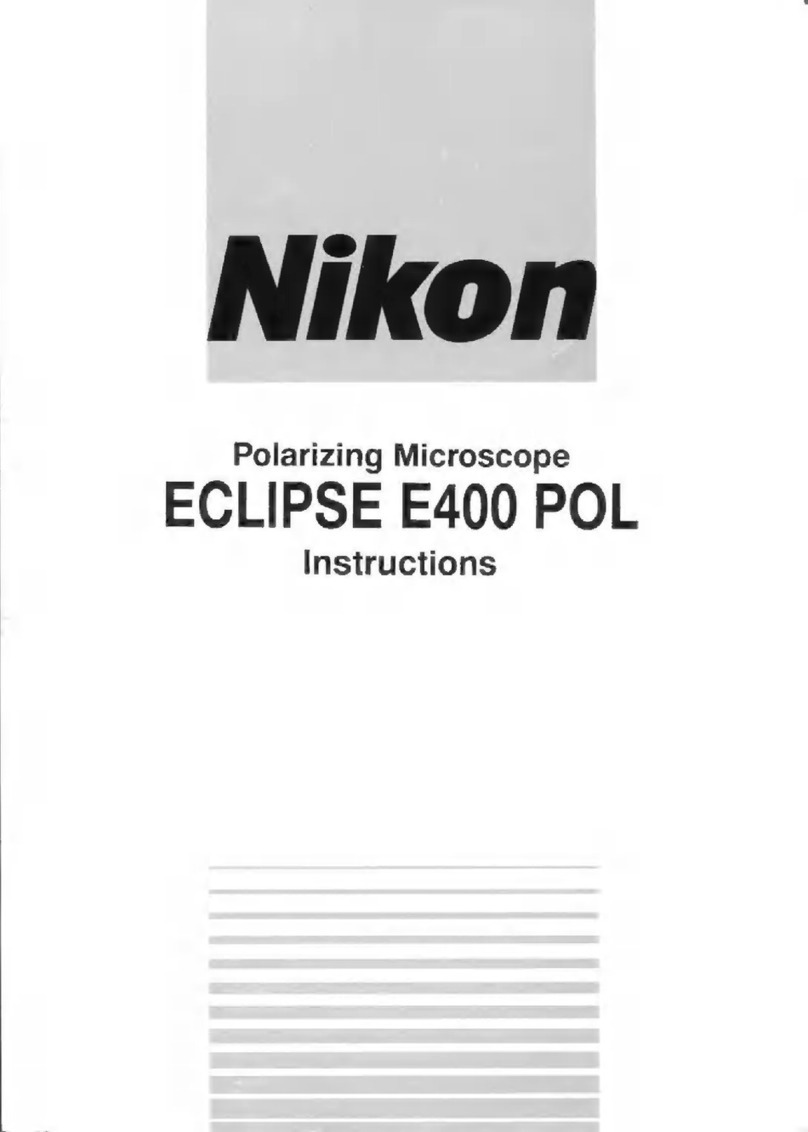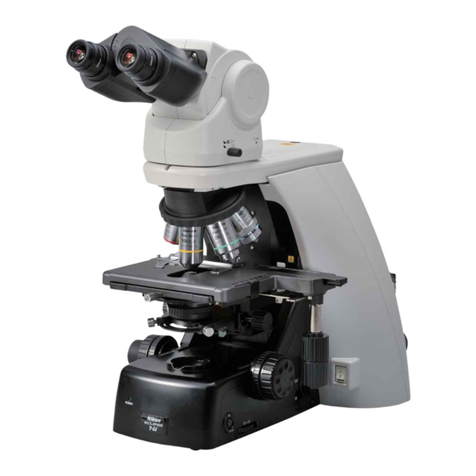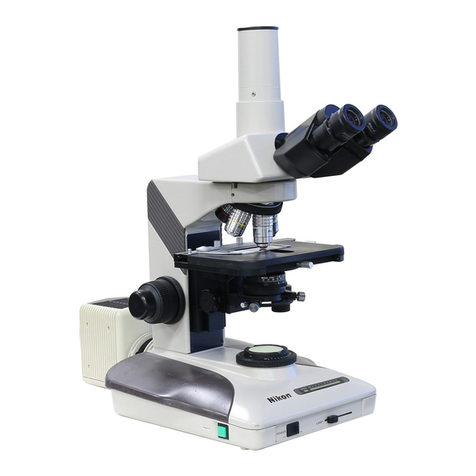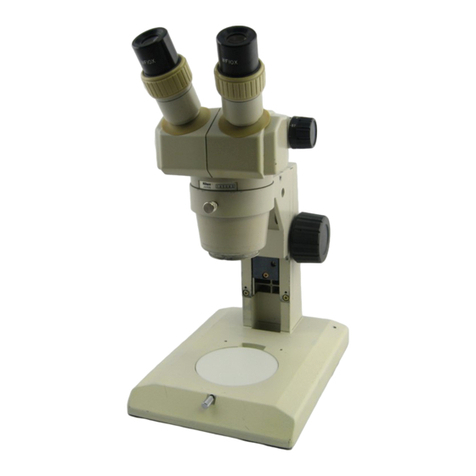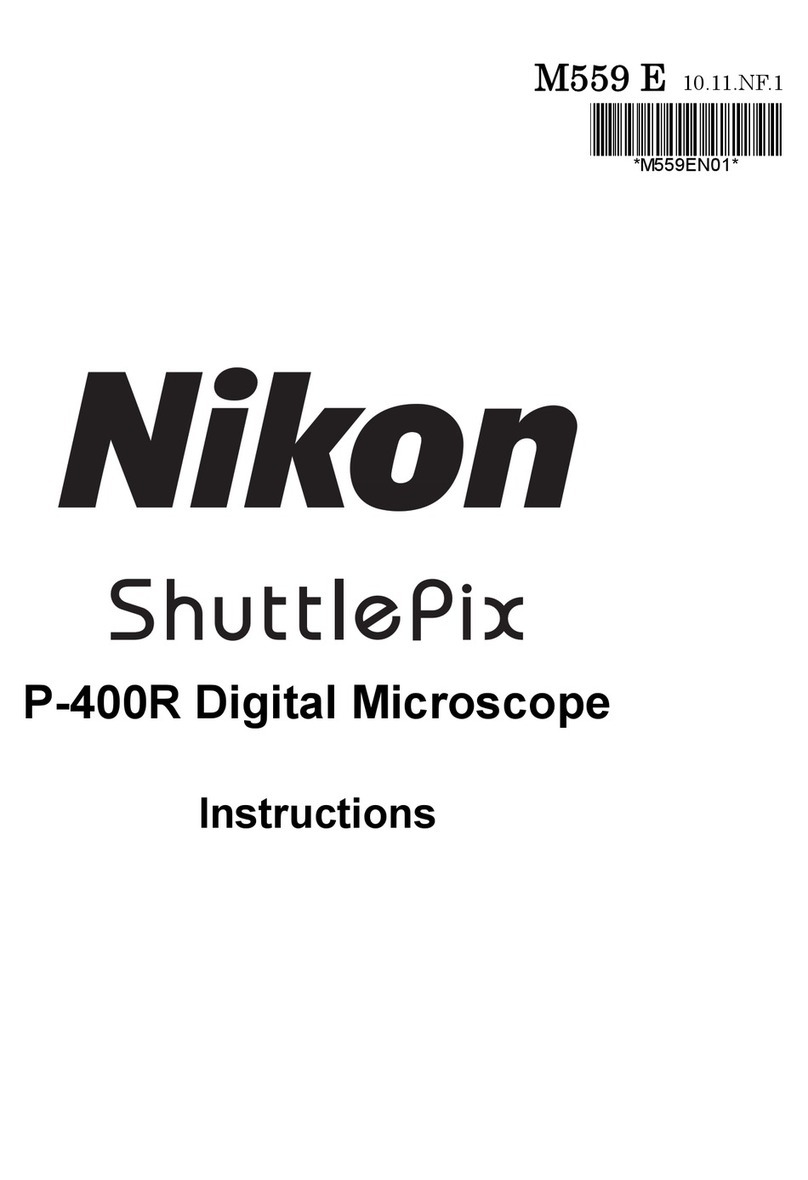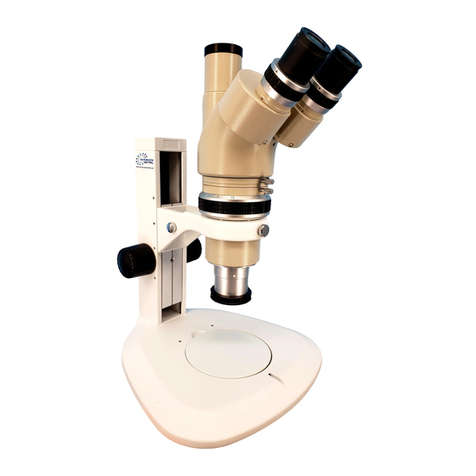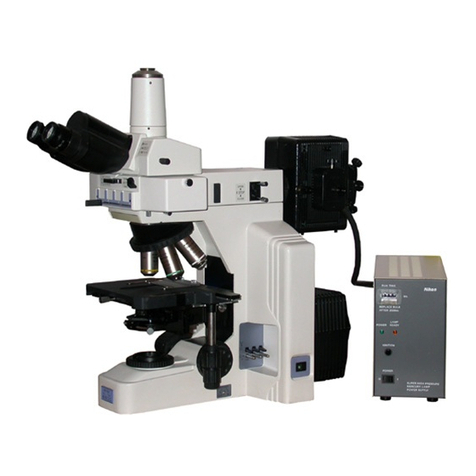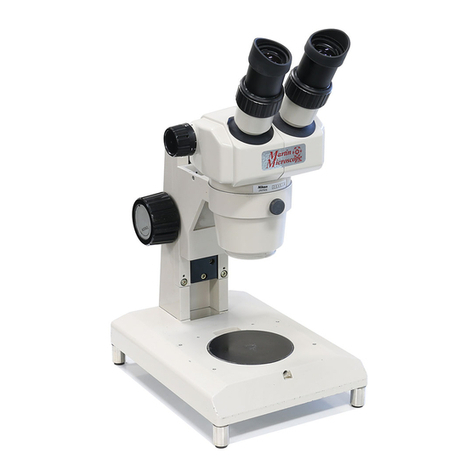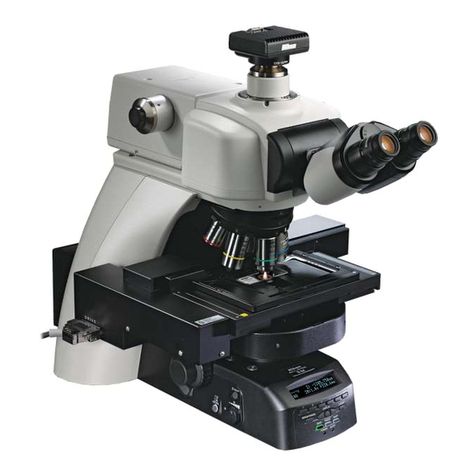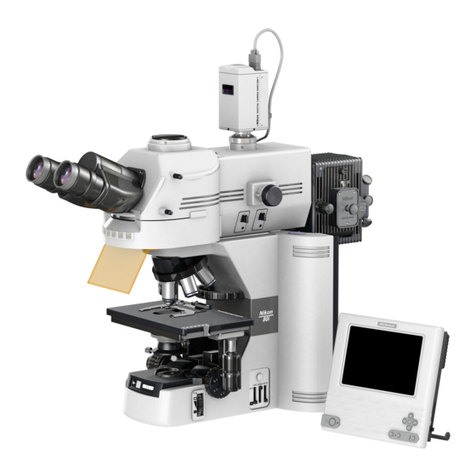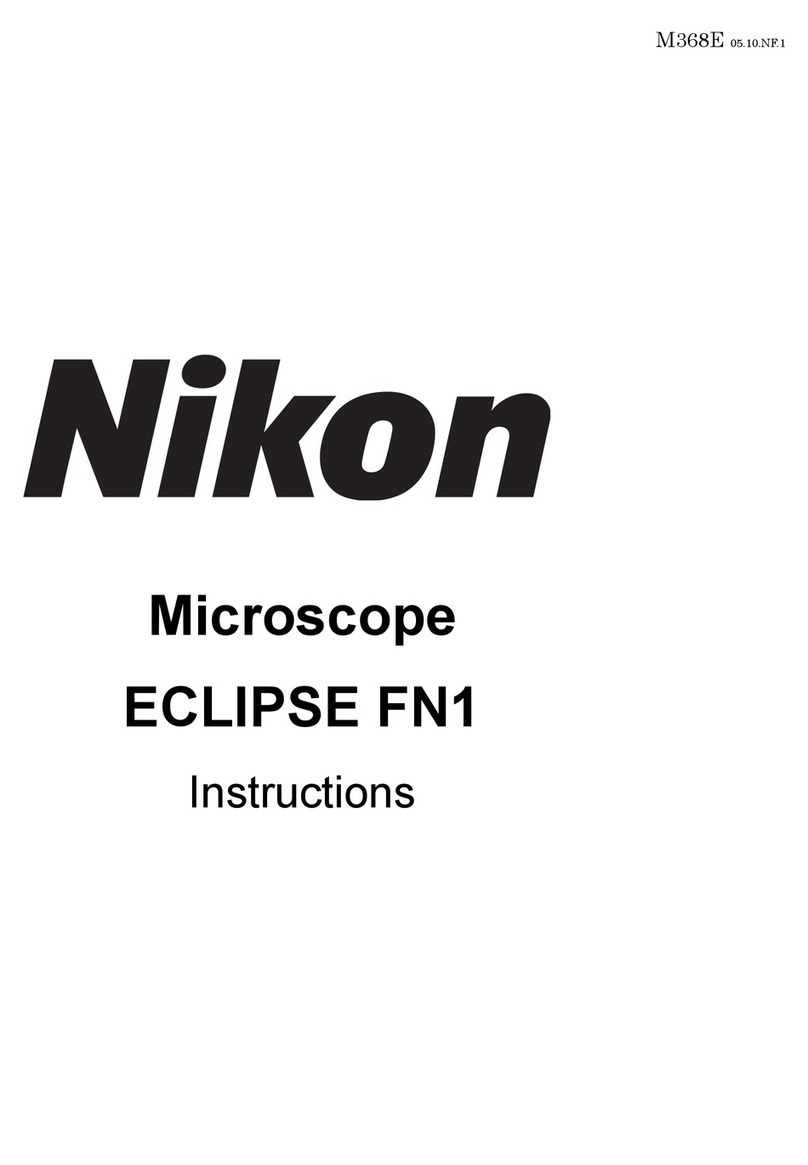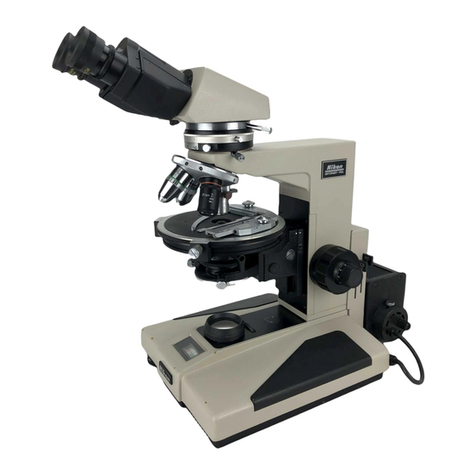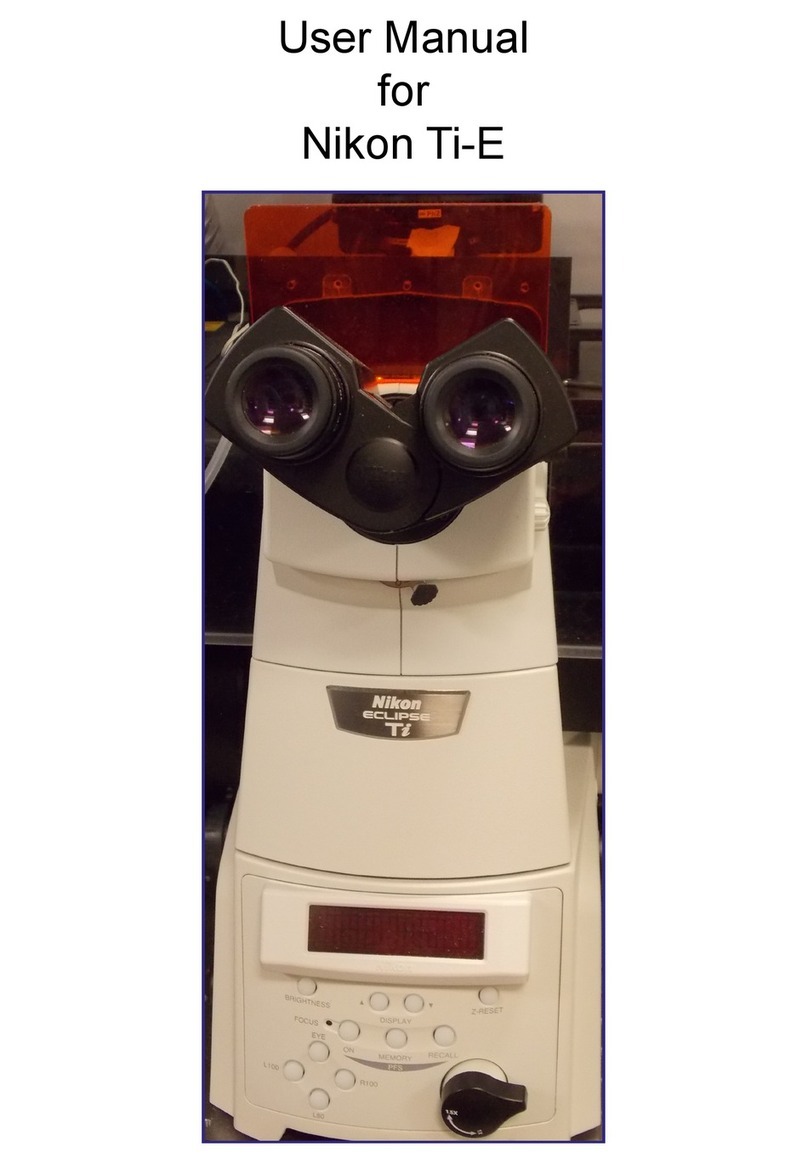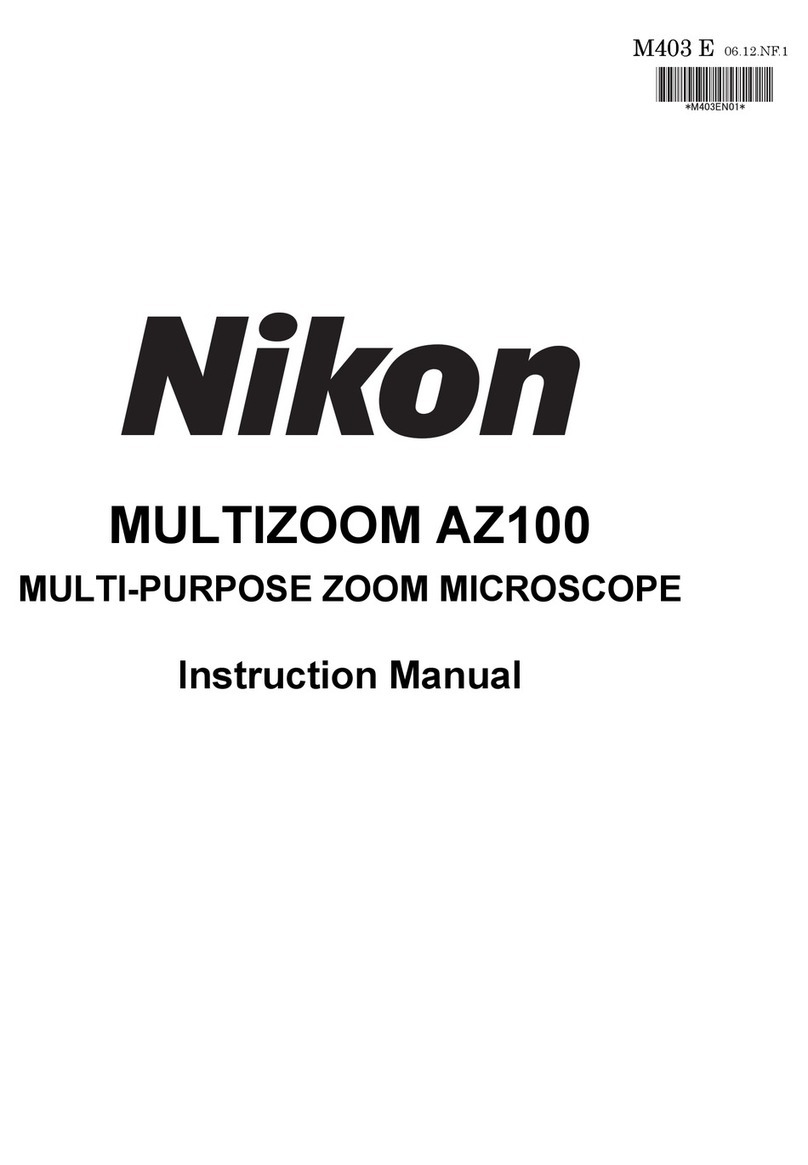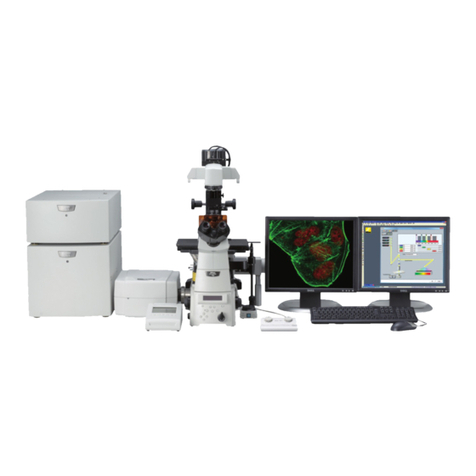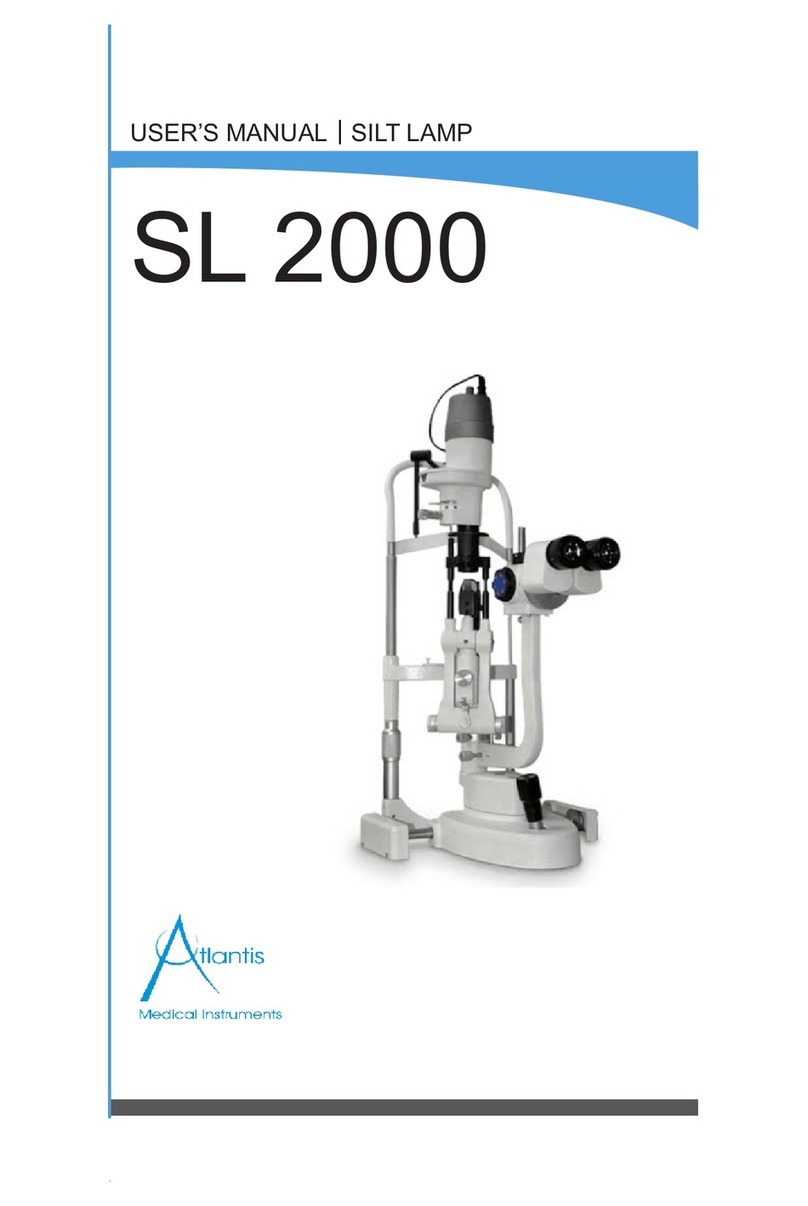
Safety Precautions
viii
Safety Precautions/Notes on Handling the Product
WARNING
1 Do not disassemble.
Disassembling this product may result in electric
shock or malfunction. Malfunction and damage
due to disassembling or modification are
unwarranted.
Do not disassemble parts other than those
described in this manual. If you experience
problems with this product, contact your nearest
Nikon representative.
2 Read the instruction manuals carefully.
To ensure safety, thoroughly read this manual and
the manuals for other equipment to be used with
this product. Particularly, all warnings and
cautions given at the beginning of each manual
must be observed.
Safety is a top design priority for Nikon products.
Safety is ensured as long as the user observes all
of the warnings and cautions given in the
manuals, and uses the system only for its
intended purpose. However, failure to heed the
warnings and cautions given in the manuals,
subjecting the system to shock or impact, or
attempting to disassemble the system may result
in unexpected accidents and injury.
Product with CI-FL or D-FL Epi-fluorescence
attachment:
The light source used for Epi-fluorescence
microscopy (HG Precentered Fiber Illuminator)
requires special care during handling because of
its characteristics. Be sure to refer to the manual
for the light source being used.
3 Notes on the power cord
Be sure to use the specified power cord. Use of
other power cords may result in malfunction or
fire. This product is classified as having Class I
protection against electric shock. Make sure this
product is connected to an appropriate protective
earth terminal.
Refer to Chapter 6, “2 Performance Properties” fo
the specified power cords.
●To prevent electric shock, always turn off the
power switch (press to the “O” position) for the
microscope before connecting or disconnecting
the power cord.
4 Hazards of mercury lamps
(when using a CI-FL or D-FL Epi-fluorescence
attachment)
The light source used with the epi-fluorescence
attachment (HG precentered fiber illuminator)
requires special care during handling because of
its characteristics. For safe and correct use of this
system, carefully read the warnings below. Keep
in mind all potential hazards. Additionally, carefully
read the manual for the illuminator and the manual
from the lamp manufacturer (if provided), then
follow the instructions given therein. Failure to
heed the warnings and cautions given in the
manuals, subjecting the system to shock or
impact, or attempting to disassemble the system
may result in unexpected accidents and injury.
●Ultraviolet light
When lit, mercury lamps radiate ultraviolet light
that can damage the eyes and skin. Direct
viewing of the light may result in blindness.
When changing filter cubes, always turn off the
light source of the Epi-fluorescence
attachment. Leaving the lamp turned on during
filter cube replacement may result in ultraviolet
exposure.
●High-pressure gas
The lamps contain sealed gas under very high
pressure. And the pressure increases when the
lamp is on. If the lamp is scratched, fouled,
subjected to high external pressure or physical
impact, or used beyond its service life, the
sealed gas may leak or the lamp may burst,
resulting in gas inhalation, injury from glass, or
other accidents.
●Heat
When the lamp is lit, the lamp and surroundings
will become extremely hot. Do not touch the
lamp with bare hands or place flammable
materials near the lamp. Failure to comply may
result in burns or fire.
●Designated lamp
Be sure to use the designated lamp. Using
other types of lamps may result in accidents,
including bursting of the lamp.
5 Hazardous sample handling
This product is intended primarily for microscopic
observations and image capture of cells and
tissue set on glass slides.
Check to determine whether a sample is
hazardous before handling. If sample is
hazardous, handle it according to the standard
procedure specified for your laboratory. If the
sample is potentially infectious, wear rubber
gloves and avoid directly touching samples. If
such a sample is spilled onto this product, the
portion must be decontaminated in a safety
manner. Consult your safety supervisor or safety
standard of your facility.
